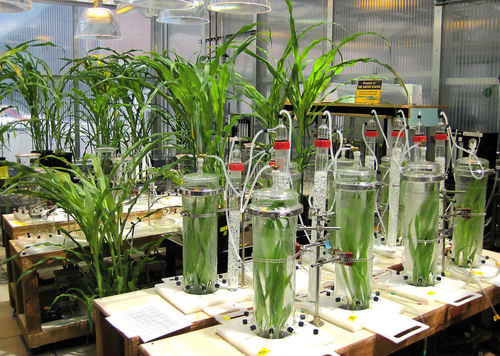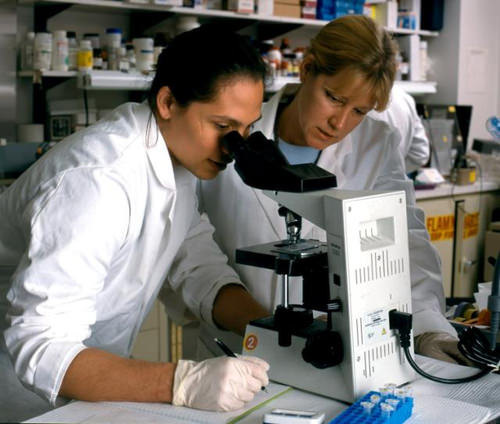1.13: Experiment
- Page ID
- 1378
\( \newcommand{\vecs}[1]{\overset { \scriptstyle \rightharpoonup} {\mathbf{#1}} } \)
\( \newcommand{\vecd}[1]{\overset{-\!-\!\rightharpoonup}{\vphantom{a}\smash {#1}}} \)
\( \newcommand{\dsum}{\displaystyle\sum\limits} \)
\( \newcommand{\dint}{\displaystyle\int\limits} \)
\( \newcommand{\dlim}{\displaystyle\lim\limits} \)
\( \newcommand{\id}{\mathrm{id}}\) \( \newcommand{\Span}{\mathrm{span}}\)
( \newcommand{\kernel}{\mathrm{null}\,}\) \( \newcommand{\range}{\mathrm{range}\,}\)
\( \newcommand{\RealPart}{\mathrm{Re}}\) \( \newcommand{\ImaginaryPart}{\mathrm{Im}}\)
\( \newcommand{\Argument}{\mathrm{Arg}}\) \( \newcommand{\norm}[1]{\| #1 \|}\)
\( \newcommand{\inner}[2]{\langle #1, #2 \rangle}\)
\( \newcommand{\Span}{\mathrm{span}}\)
\( \newcommand{\id}{\mathrm{id}}\)
\( \newcommand{\Span}{\mathrm{span}}\)
\( \newcommand{\kernel}{\mathrm{null}\,}\)
\( \newcommand{\range}{\mathrm{range}\,}\)
\( \newcommand{\RealPart}{\mathrm{Re}}\)
\( \newcommand{\ImaginaryPart}{\mathrm{Im}}\)
\( \newcommand{\Argument}{\mathrm{Arg}}\)
\( \newcommand{\norm}[1]{\| #1 \|}\)
\( \newcommand{\inner}[2]{\langle #1, #2 \rangle}\)
\( \newcommand{\Span}{\mathrm{span}}\) \( \newcommand{\AA}{\unicode[.8,0]{x212B}}\)
\( \newcommand{\vectorA}[1]{\vec{#1}} % arrow\)
\( \newcommand{\vectorAt}[1]{\vec{\text{#1}}} % arrow\)
\( \newcommand{\vectorB}[1]{\overset { \scriptstyle \rightharpoonup} {\mathbf{#1}} } \)
\( \newcommand{\vectorC}[1]{\textbf{#1}} \)
\( \newcommand{\vectorD}[1]{\overrightarrow{#1}} \)
\( \newcommand{\vectorDt}[1]{\overrightarrow{\text{#1}}} \)
\( \newcommand{\vectE}[1]{\overset{-\!-\!\rightharpoonup}{\vphantom{a}\smash{\mathbf {#1}}}} \)
\( \newcommand{\vecs}[1]{\overset { \scriptstyle \rightharpoonup} {\mathbf{#1}} } \)
\( \newcommand{\vecd}[1]{\overset{-\!-\!\rightharpoonup}{\vphantom{a}\smash {#1}}} \)
\(\newcommand{\avec}{\mathbf a}\) \(\newcommand{\bvec}{\mathbf b}\) \(\newcommand{\cvec}{\mathbf c}\) \(\newcommand{\dvec}{\mathbf d}\) \(\newcommand{\dtil}{\widetilde{\mathbf d}}\) \(\newcommand{\evec}{\mathbf e}\) \(\newcommand{\fvec}{\mathbf f}\) \(\newcommand{\nvec}{\mathbf n}\) \(\newcommand{\pvec}{\mathbf p}\) \(\newcommand{\qvec}{\mathbf q}\) \(\newcommand{\svec}{\mathbf s}\) \(\newcommand{\tvec}{\mathbf t}\) \(\newcommand{\uvec}{\mathbf u}\) \(\newcommand{\vvec}{\mathbf v}\) \(\newcommand{\wvec}{\mathbf w}\) \(\newcommand{\xvec}{\mathbf x}\) \(\newcommand{\yvec}{\mathbf y}\) \(\newcommand{\zvec}{\mathbf z}\) \(\newcommand{\rvec}{\mathbf r}\) \(\newcommand{\mvec}{\mathbf m}\) \(\newcommand{\zerovec}{\mathbf 0}\) \(\newcommand{\onevec}{\mathbf 1}\) \(\newcommand{\real}{\mathbb R}\) \(\newcommand{\twovec}[2]{\left[\begin{array}{r}#1 \\ #2 \end{array}\right]}\) \(\newcommand{\ctwovec}[2]{\left[\begin{array}{c}#1 \\ #2 \end{array}\right]}\) \(\newcommand{\threevec}[3]{\left[\begin{array}{r}#1 \\ #2 \\ #3 \end{array}\right]}\) \(\newcommand{\cthreevec}[3]{\left[\begin{array}{c}#1 \\ #2 \\ #3 \end{array}\right]}\) \(\newcommand{\fourvec}[4]{\left[\begin{array}{r}#1 \\ #2 \\ #3 \\ #4 \end{array}\right]}\) \(\newcommand{\cfourvec}[4]{\left[\begin{array}{c}#1 \\ #2 \\ #3 \\ #4 \end{array}\right]}\) \(\newcommand{\fivevec}[5]{\left[\begin{array}{r}#1 \\ #2 \\ #3 \\ #4 \\ #5 \\ \end{array}\right]}\) \(\newcommand{\cfivevec}[5]{\left[\begin{array}{c}#1 \\ #2 \\ #3 \\ #4 \\ #5 \\ \end{array}\right]}\) \(\newcommand{\mattwo}[4]{\left[\begin{array}{rr}#1 \amp #2 \\ #3 \amp #4 \\ \end{array}\right]}\) \(\newcommand{\laspan}[1]{\text{Span}\{#1\}}\) \(\newcommand{\bcal}{\cal B}\) \(\newcommand{\ccal}{\cal C}\) \(\newcommand{\scal}{\cal S}\) \(\newcommand{\wcal}{\cal W}\) \(\newcommand{\ecal}{\cal E}\) \(\newcommand{\coords}[2]{\left\{#1\right\}_{#2}}\) \(\newcommand{\gray}[1]{\color{gray}{#1}}\) \(\newcommand{\lgray}[1]{\color{lightgray}{#1}}\) \(\newcommand{\rank}{\operatorname{rank}}\) \(\newcommand{\row}{\text{Row}}\) \(\newcommand{\col}{\text{Col}}\) \(\renewcommand{\row}{\text{Row}}\) \(\newcommand{\nul}{\text{Nul}}\) \(\newcommand{\var}{\text{Var}}\) \(\newcommand{\corr}{\text{corr}}\) \(\newcommand{\len}[1]{\left|#1\right|}\) \(\newcommand{\bbar}{\overline{\bvec}}\) \(\newcommand{\bhat}{\widehat{\bvec}}\) \(\newcommand{\bperp}{\bvec^\perp}\) \(\newcommand{\xhat}{\widehat{\xvec}}\) \(\newcommand{\vhat}{\widehat{\vvec}}\) \(\newcommand{\uhat}{\widehat{\uvec}}\) \(\newcommand{\what}{\widehat{\wvec}}\) \(\newcommand{\Sighat}{\widehat{\Sigma}}\) \(\newcommand{\lt}{<}\) \(\newcommand{\gt}{>}\) \(\newcommand{\amp}{&}\) \(\definecolor{fillinmathshade}{gray}{0.9}\)
So what exactly is an experiment?
At first you may picture a science laboratory with microscopes and chemicals and people in white lab coats. But do all experiments have to be done in a lab? And do all scientists have to wear lab coats?
Experiments
Figure below shows a laboratory experiment involving plants. An experiment is a special type of scientific investigation that is performed under controlled conditions, usually in a laboratory.
 A laboratory experiment studying plant growth. What might this experiment involve?
A laboratory experiment studying plant growth. What might this experiment involve?Some experiments can be very simple, but even the simplest can contribute important evidence that helps scientists better understand the natural world.
As many different types of experiments are possible, an experiment must be designed to produce data that can help confirm or reject the hypothesis.
Variables
An experiment generally tests how one variable is affected by another. The affected variable is called the dependent variable. In the plant experiment shown above, the dependent variable is plant growth. The variable that affects the dependent variable is called the independent variable. In the plant experiment, the independent variable could be fertilizer—some plants will get fertilizer, others will not. The scientists change the amount of the independent variable (the fertilizer) to observe the effects on the dependent variable (plant growth). An experiment needs to be run simultaneously in which no fertilizer is given to the plant. This would be known as a control experiment. In any experiment, other factors that might affect the dependent variable must be controlled. In the plant experiment, what factors do you think should be controlled? (Hint: What other factors might affect plant growth?)
Sample Size and Repetition
The sample in an experiment or other investigation consists of the individuals or events that are studied, and the size of the sample (or sample size) directly affects the interpretation of the results. Typically, the sample is much smaller than all such individuals or events that exist in the world. Whether the results based on the sample are true in general cannot be known for certain. However, the larger the sample is, the more likely it is that the results are generally true.
Similarly, the more times that an experiment is repeated (which is known as repetition) and the same results obtained, the more likely the results are valid. This is why scientific experiments should always be repeated.
Super Microscopes
Microscopes are arguably one of the most important tools of the biologist. They allow the visualization of smaller and smaller biological organisms and molecules. With greatly magnified powers, these instruments are becoming increasingly important in modern day research.
 In this experiment, a scientist is conducting research (and taking notes) while looking through a microscope.
In this experiment, a scientist is conducting research (and taking notes) while looking through a microscope.Science Friday: The Lollipop Hypothesis
Ever wondered how many licks it takes to reach the center of a lollipop? Mathematicians at NYU’s applied mathematics lab have designed experiments to determine this. Find out in this video by Science Friday.
Science Friday: No Strain, No Gain: Filter Feeding Mantas
Mantas are an example of filter feeders that obtain food as they swim through the water. How do these filters work? In this video by Science Friday, Dr. Misty Paig-Tran discusses the experiments she performed to understand these filters.
Summary
- An experiment is a special type of scientific investigation that is performed under controlled conditions, usually in a laboratory.
- An experiment generally tests how one variable is affected by another.
- The sample size in an experiment directly affects the interpretation of the results.
- Repetition is the repeating of an experiment, validating the results.
Review
- What is an experiment?
- Compare the dependent variable to the independent variable.
- Identify the independent and dependent variables in the following experiment: A scientist grew bacteria on gel in her lab. She wanted to find out if the bacteria would grow faster on gel A or gel B. She placed a few bacteria on gel A and a few on gel B. After 24 hours, she observed how many bacteria were present on each type of gel.
| Image | Reference | Attributions |
 |
[Figure 1] | Credit: Eric Schmelz, U.S. Department of Agriculture;NIAID Source: Research ; http://www.flickr.com/photos/usdagov/8424943726/ ; http://www.flickr.com/photos/niaid/5613410129/ License: CC BY 2.0 |
 |
[Figure 2] | Credit: Eric Schmelz, U.S. Department of Agriculture Source: http://www.flickr.com/photos/usdagov/8424943726/ License: CC BY 2.0 |
 |
[Figure 3] | Credit: NIAID;Eric Schmelz, U.S. Department of Agriculture Source: http://www.flickr.com/photos/niaid/5613410129/ ; http://www.flickr.com/photos/usdagov/8424943726/ License: CC BY 2.0 |

